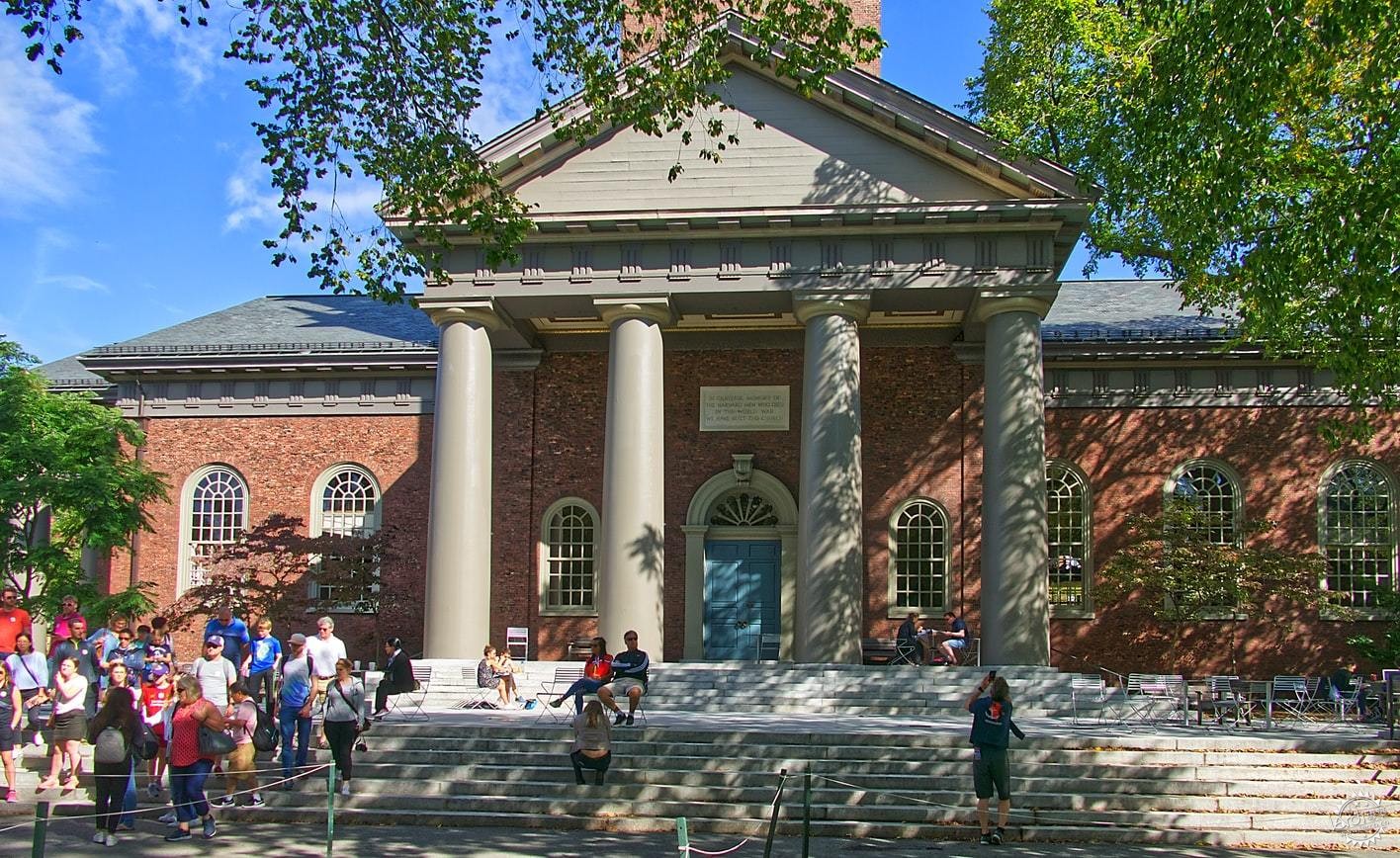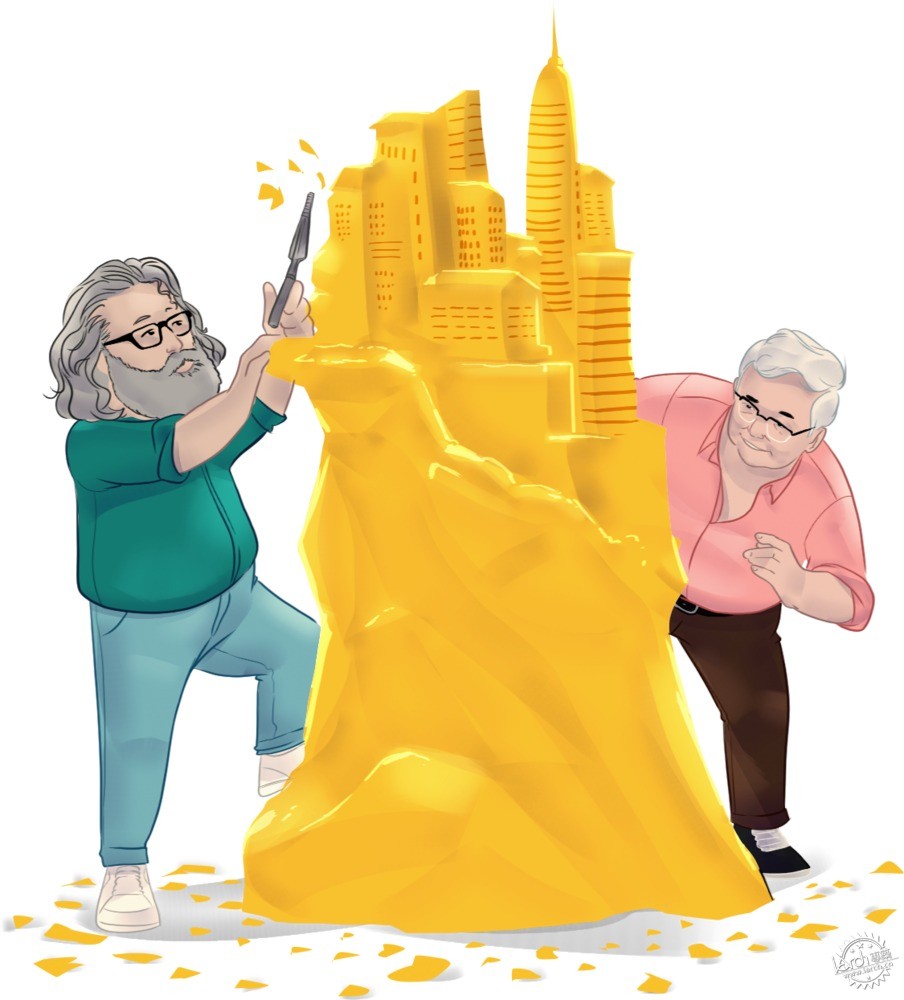
© Pascal Bernardon via Unsplash
How COVID-19 Will Shape Architectural Education
由专筑网小R编译
由于新冠病毒的影响,全球各地的高校都封闭了,主要通过线上教学进行授课,这并不是一件戏剧性的事,因为在疫情之后,世界就会恢复正常,但是,对于高校生态系统以及城市肌理的影响却需要进行不断地更迭,从而塑造适应于未来的教学模式。
目前的状况是许多高校从未遇到过的,但是高校的发展也因此取决于对于临时事件的应对措施。许多大学校园是城市规划设计的典范,它们的主要部分毗邻服务区,并没有适应性体系。这是因为在过去的50年或是100年里,这个行业并没有出现大问题,持续不断的资金流让高校体系得以持续运营下去,而这种长久以来的习惯也成为了高校名誉的重要组成部分。但是一旦危机出现,那么这些“砖石混凝土”高校便有可能缺乏相应的应急设备,传统的线下设备也需要给新科技让位,总体来说,在线教育的形式能够拥有更加灵活、设备更加先进的优势。
对于建筑教育来说,在线学习比较麻烦,以为大部分的设计工作室课程都需要一定的设备,用于了解课程需求,而这目前来说也阻碍了学术追求的发展。除此之外,并不是所有的学院、部门、工作人员都能够开启线上工作,大部分的人都没有遇到且解决过这方面的问题。到目前为止,高校通过每年的预算来建造行政设施、停车区、学生宿舍等相关建筑,整个系列都需要相当规模的资金作为支撑。那么,这也同样形成了高校的房地产产业,构建了学校的名誉体系,吸引学生的到来,然后获得一定的盈利。在过去的几年里,只有一些新型或是小型的高校才有提供不同运作方式的在线教育,这样能够提升其学生入学率,并且降低成本。
Courtesy of the coronavirus, universities are closed around the world, and classrooms are now entertained over video conferencing. This is not overly dramatic as this temporary arrangement will eclipse after cases are contained, and classes will resume soon after. However, the impacts on the university ecosystem and on the urban fabric will require immediate renovations in higher education that will shape the architectural syllabus for years to come.
Many universities around the world are facing a once in a century event, and younger ones a once in a lifetime event. Their future will be defined by their flexibility to do business. While university campuses have often been hailed as the exemplar of urban planning in many instances, as they host their primary population in immediate proximity to services, they are not resilient or adaptive systems. This is because there have not been major disruptions to this sector for the past 50 or 100 years. And continuous money flows have sustained this rigidity in planning and operation, which is now synonymous to reputation. However, those ‘brick and mortar’ universities may be the most ill-equipped in times of current crisis; giving way to newer universities to gain in repute, and for a share of business. The latter incidentally may be more flexible and better equipped in offering cheaper solutions, in the form of online education.
The case of online education is tricky for architectural training, as most design (studio) courses require some form of residency component -computing a large part of the course requirement, which is now hindering the progress of academic pursuit. Additionally, not all faculties, departments and staff are equipped to shift to online and most have never dealt with this. Prior to this, universities have leveraged their budgetary allocations to build administrative support, parking services, residential dormitories, numerous buildings, and services -a whole lot of physical infrastructure that require an incredible amount of cash flow to sustain. In return, this adds to an impressive real estate that builds university repute, which attracts students to invest in specific product (course) offerings in return of certain lifestyles. Online education, principally offered by newer (and smaller) universities has operated differently over the past years, allowing a larger student enrolment over smaller campuses, rendering cheaper product offerings.

© Felix Fokoua
就当前的发展趋势来说,在线教育的过渡愈发明显,专业机构的建筑课程需求要求比较繁杂,因为这需要特定的几个小时的面授设计咨询、教学,这有别于其他的课程类型。就此而言,来自澳大利亚的柯廷大学有着世界上首个在线建筑学硕士课程,这样的措施能够缓解当前疫情所带来的影响,那么,一所拥有54年历史的高校如何胜过其他更加老牌的高校呢?在高校学习管理的变革中,是否遇到了困难呢?
当前来说,许多高校都开始了线上教学,因为世界上许多国家的航班都减少,并且没有明确说明什么时候能够恢复正常。学生们无法按照往常的时间开学,因此线上教学开始大量使用。高校的那些昂贵且先进的设施在这个时候并没有任何吸引力,因此许多依赖于招生而维持运营的高校都造成了严重的损失,因此许多高校不得不推迟开学,亦或是重新安排教学日历,不断地推迟教学安排。这样的改变也促进了一些低收入教育体系的广泛传播,线下的教育机构受到一定的冲击。举例来说,在全球建筑行业的总人数中,非洲仅占了3%,但是其占世界总人口数量的比例为16%,意思是说当前的教育环境和相应的国家之间存在有并不匹配的现状,经济指标是高校教育的一定体现,但是招生率也是另一个关键点,其中很重要的部分是,西方的教育并不一定完全适用于发展中国家,举例来说,在加拿大适用的温度适应性玻璃幕墙就不一定适用于老挝、泰国等国家,就此而言,相较于广泛接纳西方教育方式,更为重要的应该是根据当地自身状况来调整其教育模式,这样不仅仅能够增加教育机构的经济收入,同时还能够促进整个地区的发展。
但是,虽然一定的合作能够满足学习的需求,但是如果疫情持续发展,那么教育体系就会出现问题,而这个问题自身已经超越了教育领域。
While the transitional needs to online education seem clear, Architectural requirements for course validation by professional bodies can be tricky, as they require specific hours of face-to-face design consultations and teachings, differing from other courses. On this, Curtin University from Australia, showed leadership by offering the first accredited online Master of Architecture course in the world. While this programme is surely buffered from the pandemic, the question arises as to how did a 54-year old university beat older (and more established) universities, having with more resources? Is resistance to change observed in the very administration of universities studying it?
This shift to online education will now be forced upon all universities as air fleets are grounded around the world, with no clear endpoint. Students are missing semester intakes and choosing to enroll instead in either local or online university alternatives. The heavy and expensive infrastructure that universities have invested in no longer serves as an appeal. This equates to a severe economic loss for universities that rely principally on foreign students. The result, numerous universities around the world are accepting students with either postponed entry dates or by re-structuring course offerings to push residency requirements to a later date. This transition is also allowing for larger dissemination of knowledge in low-income economies, far from the ‘brick and mortar’ established university brands. Africa, for example, only host around 3% of the global architect population, while it hosts 16% of the world’s population. A mismatch is present, and while economic metrics may be a good indicator of attaining university education, access plays another key role. One important part on this is that western world education may not be totally applicable to the developing world. For example, the glass buildings designed for temperature regulation in Canada may not be fitting in poverty-stricken areas in Laos, Thailand, or in the Mekong river delta. In this sense, wider access to western education, and -importantly- its recalibration to fit local contexts, may accentualise not only profitability for universities, but also world development.
However, while partnerships can be sought to allow for contextual programs, design residency requirements. proves problematic on the immediate term if the coronavirus lockdown extends. This is a concern that expands beyond the educational realm.

© Felix Fokoua
创新和重构不仅仅是高校的保障,也是相关教育机构的保障,在困难时期,需要考虑的是灵活性,这对于那些小规模建筑机构来说亦是如此,在疫情最严重的时候,世界各地许多建筑场地都停止了施工,许多项目都面临着经济问题,这是疫情所带来的危机,那么这该怎么办呢?这似乎是超出了建筑师职责范畴的问题,对于机构的选择需要更加灵活吗?尤其是针对那些仍然停留在传统阶段的机构体系而言,这些问题比较棘手。
另外一个方面是一些学科的需求度增加了,那么必然会有另一些学科的需求度下降。高校必须有强大的适应性和灵活性,从而提升各个学院之间的协作性与流动性,比如关乎城市健康和宜居性的建筑规划课程,更具有适应性的高校必然能够有更好的成果。因此,高校的教育大纲也许会发生改变,其中可能会包含诸如“城市健康”等曾经关注度较低的学科,此类学科也许会很快普及,它们其实已经存在了一段时间了,只是还没有和建筑学更加完善地结合在一起。
科研经费也可以应用于疫情期间的短期、中期、长期的方针与策略中,许多城市经过了封城,直接导致了社会与经济的低迷,这与建筑与规划专业息息相关。研究者在多个学科之间探索,强调了多学科思维的重要意义,这不仅仅能够解决经济问题,同时还能够给到更具适应性和影响力的设计策略,澳大利亚迪肯大学的Live+Smart研究工作室与诸如Phillip Roos、David Jones等研究者共同合作,科学理性地对待创新跨学科的合作与理念。随着智能城市的需求增加,未来的研究者和学生也需要呼应这一需求,才能解决未来的多重问题,这也类似于维持高校的灵活性和弹性。
The innovation and re-structuring are not only warranted by universities but also by accreditation bodies, where flexibility will be key in these difficult times. This is also the same for architectural registration bodies that seek hours of site experience, in a time where construction sites around the world are closed, and where numerous projects will soon face forced closures due to economic concerns. What will then happen to junior architects that spent 2 years going through concept to construction to see their site finally closed due to bankruptcy, linked to the coronavirus? An issue being outside their scope and power… Will there be flexibility on registration requirements? This point is particularly tricky, in particular for administrators of architectural bodies that tend to linger on traditional (and often superfluous) requirements for registration.
Another aspect is the demand for some disciplines will increase and others will decline. Universities will have to be flexible and adaptable and encourage increased mobility of their resources across faculties. Take for example the upcoming interest of architectural and planning courses addressing urban health and liveability. Universities that will adapt sooner will reap the most reward. So, we may see upcoming changes in syllabus offerings to include ‘urban health’, an inexistent subject during our (the authors) terms as architecture students. The emergence of joint-degrees may soon arise. A prospect which other disciplines had adopted for a while, but which somehow seldomly seen in Architecture.
Research funding is also expected to be redirected towards finding immediate, short, medium, and long term solutions to addressing the pandemic, across an array of disciplines. In a time where major cities are under lockdown, leading to direct societal and economic impacts, Architecture and Planning are directly concerned. The need for multi-disciplinary thinking must be accentuated as researchers navigate seamlessly amongst different, yet connected disciplines. This may not only address the issue of funding, but also allow for more cohesive solutions. The Live+Smart Research Laboratory at Deakin University, with academics in the likes of Phillip Roos, David Jones and others, approaches this idea of innovative transdisciplinary research and collaboration intelligently. As the demand for more smart city responses to pandemics will increase, so will many other planning and architectural solutions. Positioning future academics and students towards responding to this need will be key in crafting future problem solvers, just as in sustaining the economic resilience of universities.

© Felix Fokoua
建筑学常常被人们认为是能够解决问题的科目,但是其教育常常围绕着美学设计,无论是文化背景,还是规模、形态方面来说,设计方案与实际状况脱节的问题常常为人们所提及,而现代的建筑评论也是在这样的背景下不断前进,通过对抽象美学的追求,建筑学有时候会有实际的状况保持了一定的距离,除此之外,世界的变化不断存在,不确定因素也不断出现,建筑同样需要跟上时代的发展,建筑学需要针对世界所存在的真实问题而构成解决策略,进行学科的重组,使其真正成为能够解决问题的艺术。
新冠病毒给人类世界开了个大玩笑,也让世界意识到,在教育和社会层面都需要进行相应的适应性转变,让未来的建筑师能够更好地应对各种问题,因此需要对现有的建筑教育纲要进行重新思考与调整,同样重视小规模的工作室和设计院,另外,也需要扩大教学课程规模、融合多个学科,做到真正致力于建筑的未来发展,因为未来是美好的,但是它也是有弹性、可持续的。
本文是ArchDaily与Zaheer Allam、Gaetan Siew、Felix Fokoua为期一个月的部分合作成果,本次合作目的是探索新冠病毒对于建筑和城市的未来影响。
Lastly, Architecture is often hailed as a discipline of problem-solving, but its education has somehow principally revolved around the pursuit of aesthetics. Increasing criticism continues to arise on architectural and design solutions being disconnected -both culturally and in scale, shape and form, from their immediate context; where the critic on modernism principally rides on. Through the sole pursuit of abstraction, the discipline seems to obstinately distance itself from pursuing real and practical solutions. Moreover, in a time where the world’s challenges keep morphing and uncertainties keep arising due to the constant change in variables, architecture needs to keep up. Architecture needs to adopt an eclectic view of the world, regroup disciplines, and perhaps rebrand it to the art of wicked problem solvers.
The coronavirus brought about a disruption, which also brings about an opportunity to address other much-needed changes at both education and societal level. For future architects to be equipped to face those, a review of the architectural syllabus is needed where equal emphasis is provided on studio just as much as other dimensions. Along with this, it may also be the time to expand the architectural curriculum, merge across disciplines and truly work towards building the future. A future is just as much as beautiful as it is resilient, sustainable, inclusive and safe.
This article falls part of a month-long collaboration between ArchDaily and Zaheer Allam, Gaetan Siew, and Felix Fokoua to explore the future of Architecture and Cities after the coronavirus (COVID-19).
|
|
